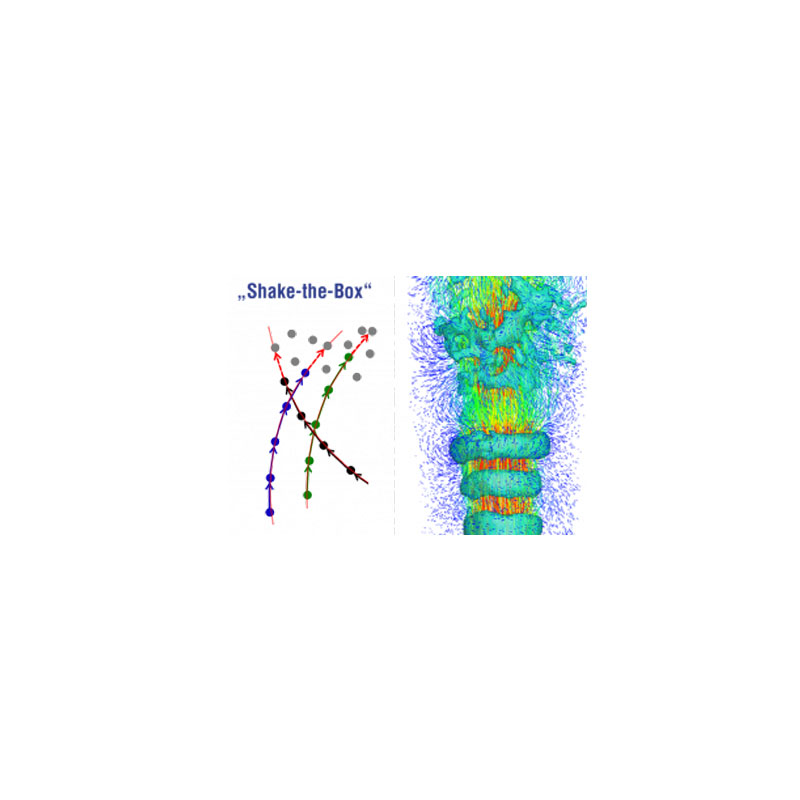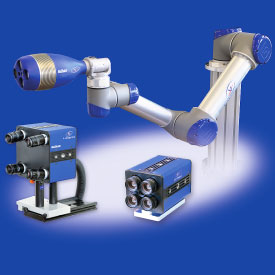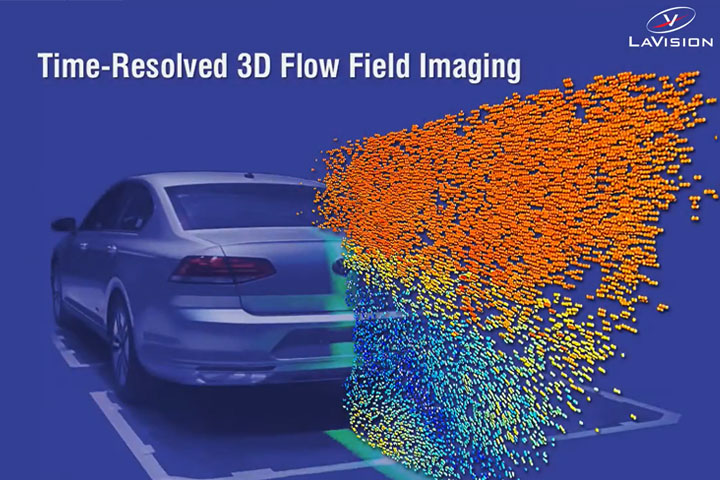
Shake-the-Box
Particle tracks at high seeding densities
Large Scale PIV/PTV in air
Shake-the-Box is the most advanced 3D Lagrangian Particle Tracking Velocimetry (PTV) method for densely seeded flows at highest spatial resolution. Compared to the voxel-based Tomo-PIV approach Shake-the-Box is a purely particle-based technique using an Iterative Particle Reconstruction (IPR) technique in combination with an advanced 4D-PTV algorithm using the time-information for track reconstruction. Shake-the-Box achieves a higher reconstruction accuracy at much faster processing speed compared with its TR-Tomo-PIV counterpart.
Beside different DaVis software packages FlowMaster systems for TR-Tomo-PIV and Shake-the-Box are using the same hardware.
Multi-pulse Shake-the-Box
LaVision has long-time experience in determining the most appropriate and cost-effective TR-PIV solution for a wide variety of flow applications. For tailoring the best FlowMaster TR-PIV system we carefully take into account the right choice of seeding particle and, depending on its size, the necessary illumination level and the system’s optimal repetition rate for successful time-resolved PIV measurements.
From the Multi-pulse STB method, the two different recording strategies 2-pulse STB (single-illuminated double-frame recordings) and 4-pulse STB (double-illuminated double-frame recordings) can be chosen from. Whereas 2-pulse STB is able to reconstruct highly resolved flow fields with only minimal temporal information, 4-pulse STB offers the possibility to extract all acceleration terms at the same time.
Due to its particle-based reconstruction technique, Multi-pulse STB does not only need far less memory capacities than classic Tomographic PIV methods, its processing speed is also significantly faster. This enables the use of high-resolution cameras and makes it possible to identify even the smallest flow structures in large measurement volumes.

MiniShaker: compact 3D camera for volumetric flow measurements
The MiniShaker is an aligned multi-sensor system in a compact housing for quick and easy volumetric flow measurements. Integrated into LaVision’s DaVis software, Shake-the-Box (4D-PTV) as well as Tomographic PIV flow fields are readily obtained. The power supply and data transfer of the system both use USB-3 interfaces largely simplifying installation and operation.
The MiniShaker is available in three models and with adaptable lenses for diverse measurement tasks. In combination with LaVision’s cost-effective LED-Flashlight it is ideal for measurements of water applications. Mounted to a robotic arm and combined with Helium-filled Soap Bubble seeding, the flexible system is most appropriate for large-scale flow analysis of low- to mid-speed wind tunnel and convective air flow applications.
Large Scale PIV/PTV in air
Air seeding with µm-particles is not suitable for large scale PIV/PTV experiments due to their limited scattering power. Neutrally buoyant Helium-filled Soap Bubbles (HFSB) with a diameter of 0.3 mm and a response time less than 15 µs scatter 10000x more light than µm-particles and, therefore, are suitable for large scale PIV/PTV experiments in the lower subsonic regime.
LaVision’s HFSB Seeding Generator can deliver 0.3 mm mono-sized bubbles at a production rate of 40000 bubbles per second and per nozzle and can operate simultaneously up to 60 nozzles in parallel. The typical life time of the Helium-filled soap bubbles is a few minutes. Furthermore, the increased scattering intensity allows to switch from laser to LED illumination, greatly reducing the cost of the light source.
Time-Resolved 3D Flow Field Imaging in a Wind Tunnel for Full Scale Automotive Testing
Time-resolved 3D flow fields have been successfully measured behind a serial car in a large wind tunnel at Volkswagen. The field-of-view was 2 m x 1.6 m with a light sheet thickness of 0.2 m. The air flow was seeded with 0.3 mm in diameter Helium-filled soap bubbles applying seeding rates of more than 2 million bubbles per second operating 60 seeding nozzles.
Four high-speed cameras recorded the 3D wake flow at wind speeds of 60 km/h and 120 km/h, respectively. A high-speed laser was used for illumination. LaVision’s Shake-the-Box time-resolved 3D-PTV technique was applied to calculate the time-resolved 3D flow fields.
Need Inquire ?
If you need more information or quotation about this product, Our sales representative will reply as soon as possible
